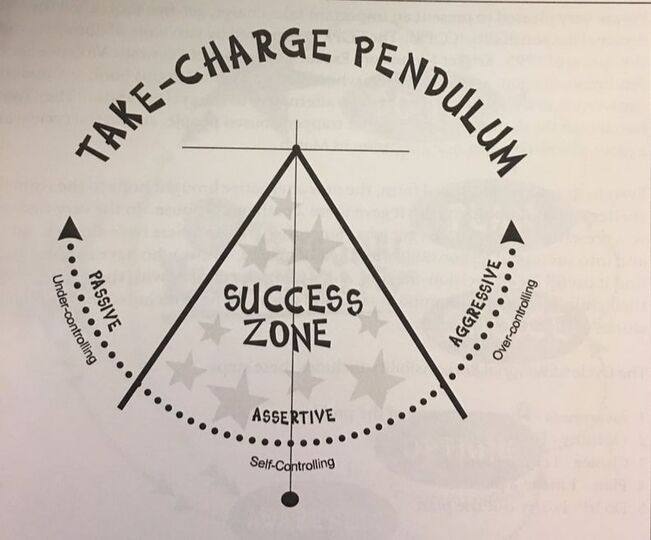Lesson 7: Assertive Behavior and Boundary Setting
Many of your clients will struggle in the area of assertive behavior and boundary setting. A fear of rejection, codependency, a lack of identity, and low self-esteem make it challenging for some people to love themselves enough to assert themselves, ask for what they need, and set healthy personal boundaries. A lack of assertive behavior and a resistance towards setting personal boundaries will cause a person to exhibit passive-aggressive behaviors and engage in dysfunctional communication (see Illustration 1 below). Poor boundaries and a lack of assertiveness can make a person susceptible to anxiety, depression, addictions, dysfunctional relationships, codependency, and abuse. When you discover that a client could use some support around boundary setting, first work with them on developing assertive behavior.
Illustration 1 - Passive-Assertive-Aggressive Pendulum
4 Steps for Assertive Communication
At this point in the module, you have completed the 15 Week Anxiety and Depression Course and have a working understanding of assertive behavior. If you feel you need a refresher, relisten to the audio teaching titled, "Session 7 - Assertive Behavior" from the course. Once your clients recognize the value of assertive behavior, they may get stuck when it comes to how to communicate assertively. To help, below are four easy-to-follow steps that your clients can use to communicate more assertively. Encourage your clients to be patient with themselves when they first begin practicing this new way of communication. Remind your clients that assertive communication is about speaking their truth and needs to others in a kind and loving way. This also means being mindful of their tone of voice and facial expressions. There will be times when they won't get it perfectly right, but they will learn each time how to tweak their communication. Note, not every situation will require them to use all four steps when communicating, but it is good to know all of them for the times when they do.
4 Steps for Assertive Communication
For example:
Another example:
Another example:
Another example:
During Your Sessions
Screenshare the handout titled 4 Steps for Assertive Communication (located in your ministry tool kit) during sessions and have clients practice role-playing different scenarios where they can practice speaking assertively. The more they practice speaking in this way, the better they will get at it.
4 Steps for Assertive Communication
- Step 1: Identify the person's behavior/action that triggered you ("When you...")
- Step 2: Communicate how it makes you feel (“I feel…”)
- Step 3: Communicate your need in love (“I need…”)
- Step 4: Ask for agreement ("Is this something you think you can do for me?")
For example:
- Step 1: When you interrupt me while I am speaking…
- Step 2: I feel unheard…
- Step 3: Do you think you could wait until I'm finished speaking and before giving your response...
- Step 4: Is this something you would be willing to do for me?
Another example:
- Step 2: Honey, I'm feeling a little overwhelmed right now...
- Step 3: Do you think you can help me finish the dishes tonight?
Another example:
- Step 3: I'm not available to watch your kids this weekend, perhaps another time.
Another example:
- Step 1: When we are late for church each week...
- Step 2: I feel we are being disruptive to the service...
- Step 3: Do you think we can leave by 9:00 this Sunday so we can be on time for service?
During Your Sessions
Screenshare the handout titled 4 Steps for Assertive Communication (located in your ministry tool kit) during sessions and have clients practice role-playing different scenarios where they can practice speaking assertively. The more they practice speaking in this way, the better they will get at it.
Podcast: Discussing Boundaries
Assignment
Read the books below:
- Better Boundaries: Owning and Treasuring Your Life, by Jan Black and Greg Enns
- 7 Habits of Highly Effective People, by Stephen R. Covey
- Review the following handouts located in your ministry tool kit:
- 4 Steps for Assertive Communication
- Healthy Communication Habits
- Passive-Assertive-Aggressive Pendulum
- 7 Habits of Highly Effective People
- Secrets to Being More Productive
- Give Yourself Permission
